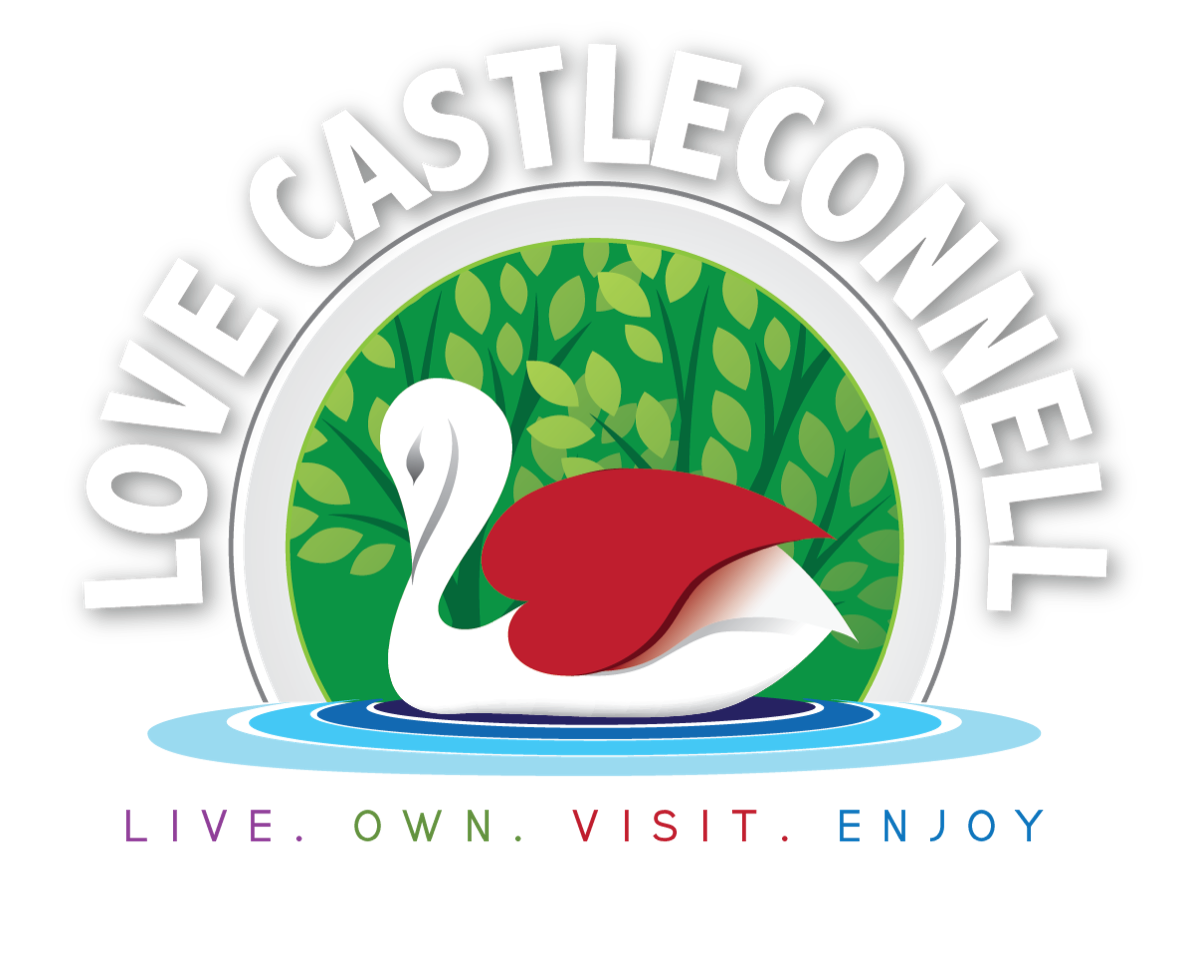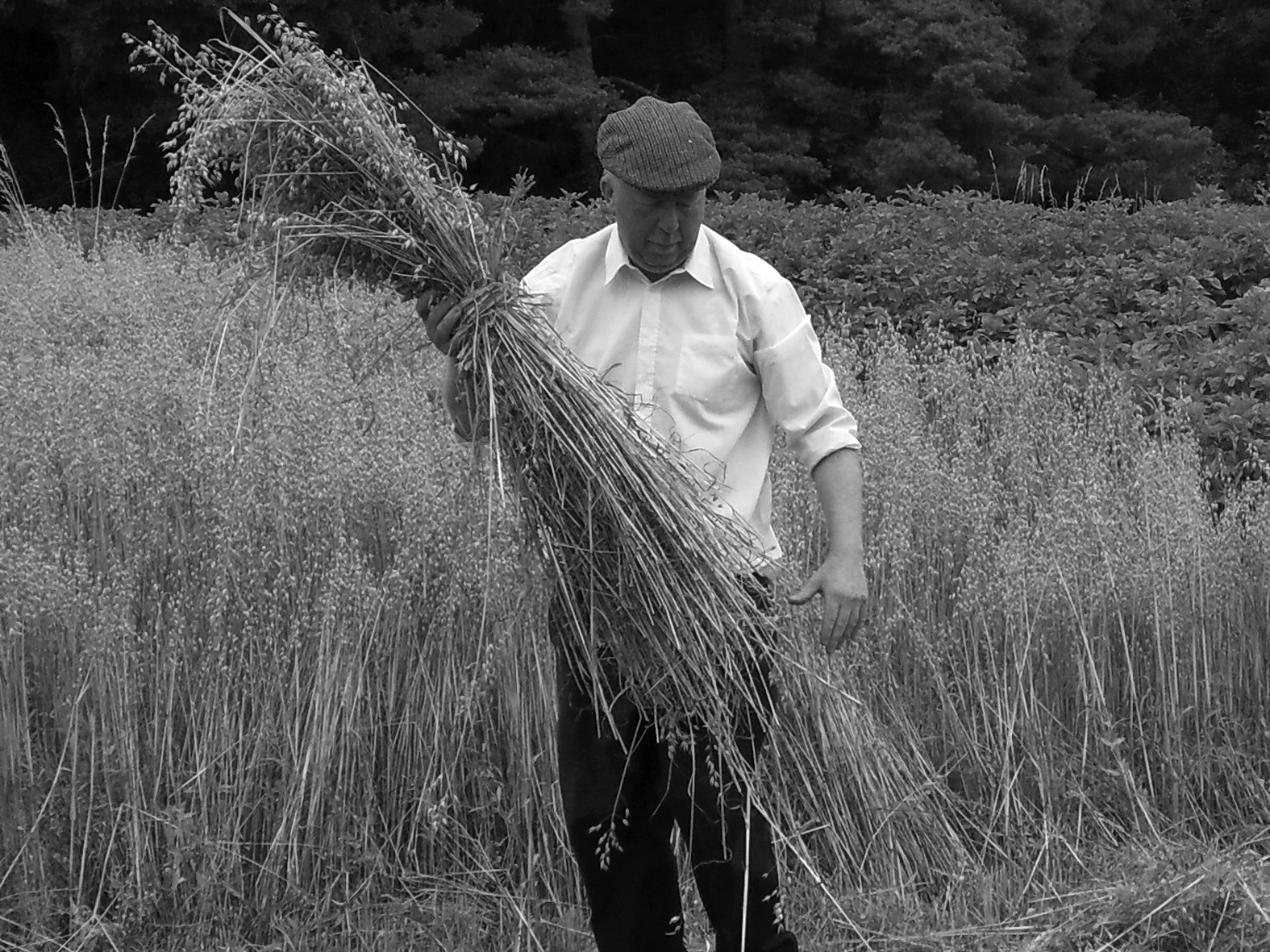“My weary hands are blistered from work in cold and heat, and oh to swing a scythe today through fields of Irish wheat”
“The Old Bog Road” by Teresa Brayton.
My father, Tom Tuohy died in the mid-1970s, he was then in his mid seventies. He would have seen and experienced massive changes in lifestyle and in particular the art of farming and in eking a living from the land. He was fortunate that he had a very good memory which he maintained up to the time he died. I was twice as fortunate that he could recount vividly for me his accounts of harvesting corn and all the different stages and evolutions that developed in harvesting during his lifetime. He would have seen the changes that devolved from the reaping hook, the scythe, the horse drawn mowing machine adopted to cut corn, the horse drawn reaper and binder, followed by tractor power to the huge combine machines we see today in fields in Kildare and Wexford.
His father and uncles cut corn with reaping hooks or sickles where you grabbed a fistful of corn in the left hand and swinging the sickle with the right it was cut close to the earth. Great edge was important. The sickle was a hand held agricultural tool with a curved blade. It had two distinct types of edge, one smooth and the other serrated. The sickle can be traced back to pre date the Neolithic Era to about 8,000 years before Christ. The blade of the sickle was offset downwards from the haft which made it easier to cut closer to the land. Skill in whetting the blade was vital to keep the cutting edge from being dulled from constant use.
The flail was next used where the grain was beaten out of the crop and the straw left unbroken which was much sought after for thatching the many thatched houses around Gouig at that time. When the grain was beaten out a winnowing machine was borrowed from Tom Stoney of Stradbally House. The farmyard fowl did a great job in gleaning the last of the grain from the chaff. The hand flail was a unique implement the beater was one piece of seasoned ash a meter long, this was called by my father’s generation the “boultáin” which was attached to the haft by a special piece of leather which was very tough and stringy known as a gad. (as tough as a gad had become a popular adage or saying because of common usage). The best material for the making of a gad was leather made from an ass’s hide. The sheaves were laid head to head on a concrete floor in a single layer while two people one left handed and the other right handed beat the grain from the straw leaving it unbroken.
Then Jim Gleeson would be called to thatch the roofs before the onset of winter rains, he was a skilled man making beautiful designs at the ridge and eaves with the “scallops”. He really excelled on hip gabled thatched houses rounding the thatch to accommodate the hip which he adorned with patterns.
The long handled scythe was the next harvesting “knife” and spalpins travelled from parish to parish seeking employment. They were great people to sharpen a scythe and they worked very hard. An upland meadow belonging to a neighbour at the back of our house in Gouig was one and a half acres (Irish Measurement) in size. A “Spalpin” called Billy Broadback came and he cut it all in one day starting at 4am to avoid the heat of the mid-day sun. Another “Spalpin” called Donall Óg, nobody knew his surname, he came and was very much in demand, mowing fields of corn and hay to earn his daily bread. They were all superseded by horse and tractor and only remembered now in lines of verse
Four gleaming scythes in the sunshine swaying
Through the deep hush of a summers day
Before their edges four stout men sweeping
In tuneful measure the fragrant hay.
Myself the fourth of them strong and happy
My keen blue steel moving fast and free
Ah! Little then was the broadest meadow
And light the heaviest scythe to me
“A Day in Eireann” by Michael Scanlon
There was a certain beauty or magic in a little field of golden standing corn, it was seen as an indication that the previous spring ploughing and tilling was eventually bearing fruit. Emigrants from Ireland and poets remembered with fondness and nostalgia the harvesting of cornfields. Patrick Mc Gill the Navvy Poet from Glenties says it very well in this little verse:
I’m going back to Glenties
When the harvest fields are brown
And the Autumn sunset lingers
On my little Irish town.
The little fields of Gouig are no longer growing corn but grass and silage as fodder for horses and cattle. Like the corncrake and the horse drawn mowing machines the “Spalpins” or the swagmen with their scythe and bundles are gone forever. They came, they laboured, and brightened the lives of the locals with their stories, yarns, yea and super yarns of activities in other parishes and counties. They and the people who employed them, all answered the call of the grim reaper, and they lie scattered in little churchyards facing the rising sun, dreaming of scything the corn, awaiting the bugle call on resurrection morn!!
Ag Criost an Siol
Ag Criost an Fomhar
In Iothlann De
Go dtugtar Sinn
Michael O’Siocháin.

